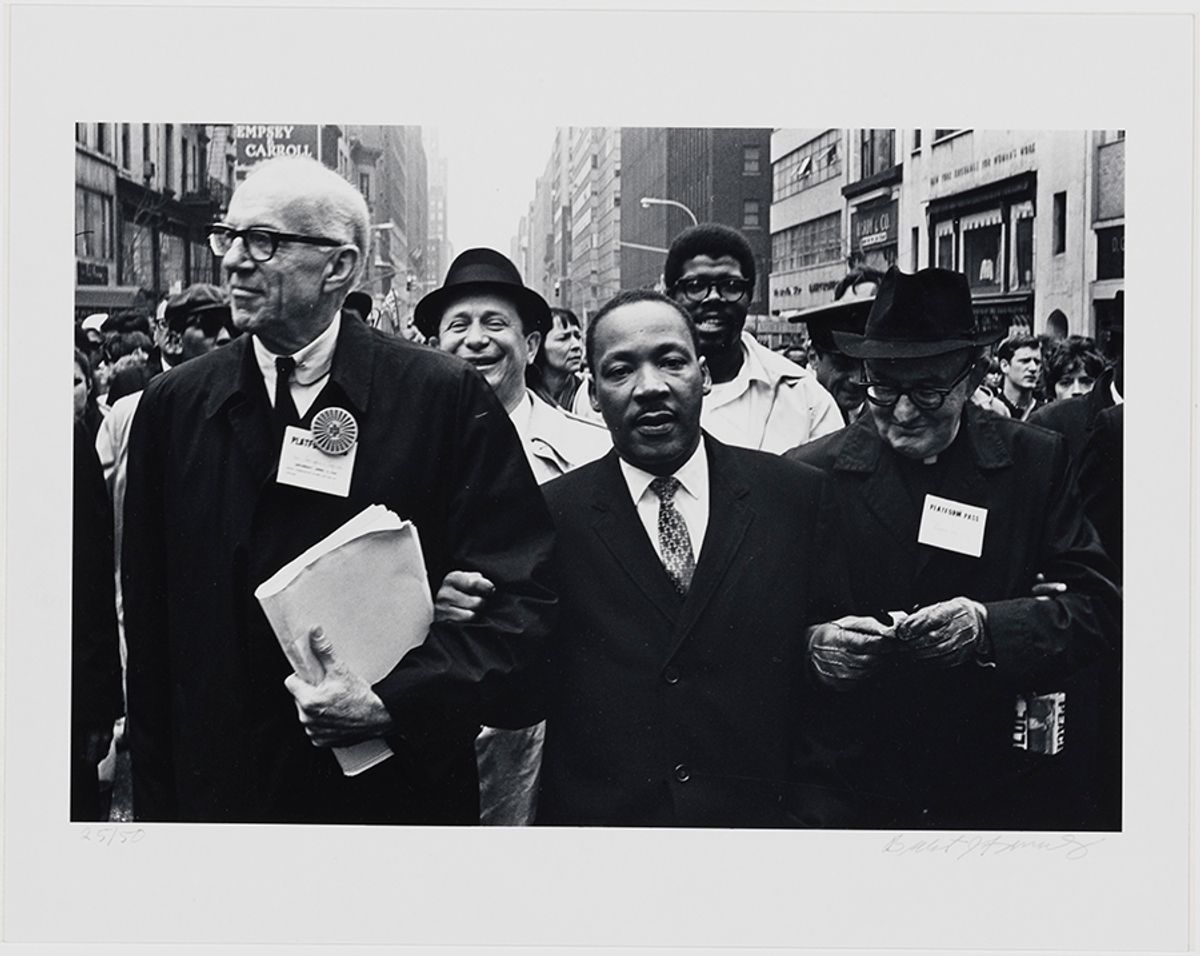In 1964, Martin Luther King, Jr was named “an honourary New Yorker” and given the Medallion of Honour by the New York City Mayor Robert F. Wagner. To explore the leader’s connections with the city on the 50th anniversary of his assassination—4 April 1968—the Museum of the City of New York has organised the exhibition King in New York (until 24 June), which has around 40 photographs, many from the museum’s collection, by photographers including Monroe Frederick, John C. Goodwin and Stephen Somerstein. “These photographs illuminate aspects of Martin Luther King Jr that are less often explored, like his linking of racism with poverty and war,” the show’s co-curator Sarah Seidman, the Puffin Foundation Curator of Social Activism, says in a statement. The show looks at King’s many national press conferences held in the city, his famous anti-Vietnam War sermon at the Riverside Church in Morningside heights on 4 April 1967—exactly one year before his assassination—New York meetings for civil rights groups and the city’s mourning of King after he was killed.
Rebel Spirits: Robert F. Kennedy and Martin Luther King Jr at the New-York Historical Society commemorates both leaders, who were assassinated within two months of each other in 1968, arguing the historical and political relationship between them with around 60 photographs (though only one group shot of the two together) by photographers including Bob Adelman, Danny Lyon and Paul Schutzer, and 30 documents and artefacts. One of the most memorable photographs shows King on the sidewalk in front of his house in 1960, holding his small child, which at first glance resembles an ordinary family snapshot—but King is looking at the remains of a burned cross left by the Ku Klux Klan. “Rebel Spirits: Robert F. Kennedy and Martin Luther King Jr. presents visitors with a unique look at the last years of both men’s lives,” says the show’s co-curator, Cristian Petru Panaite. “Through photographs and ephemera, their shared interests in civil rights, concern for the poor, and the war in Vietnam along with their differing methods of how to achieve those goals are explored in a way that reminds us that the events of the 1960s are still felt today.”
See the many ways artists from the 1940s to today have used their works as tools for protest or resistance at the Whitney Museum, which has dug into its collection for the show An Incomplete History of Protest: Selections from the Whitney’s Collection, 1940-2017 (until 27 August). The pieces range from 1940s photographs covertly taken by Toyo Miyatake inside a California internment camp for Japanese Americans to abstract pieces like Theaster Gates’s, Minority Majority (2012) made of decommissioned fire hoses on plywood. The show is also a critical look at the museum’s history, including archival materials such as correspondence between the former director John Bauer and members of the Black Emergency Cultural Coalition about the exhibition Contemporary Black Artists in America, 1968-71 and the 1987 Guerrilla Girls poster Guerrilla Girls Review the Whitney.


